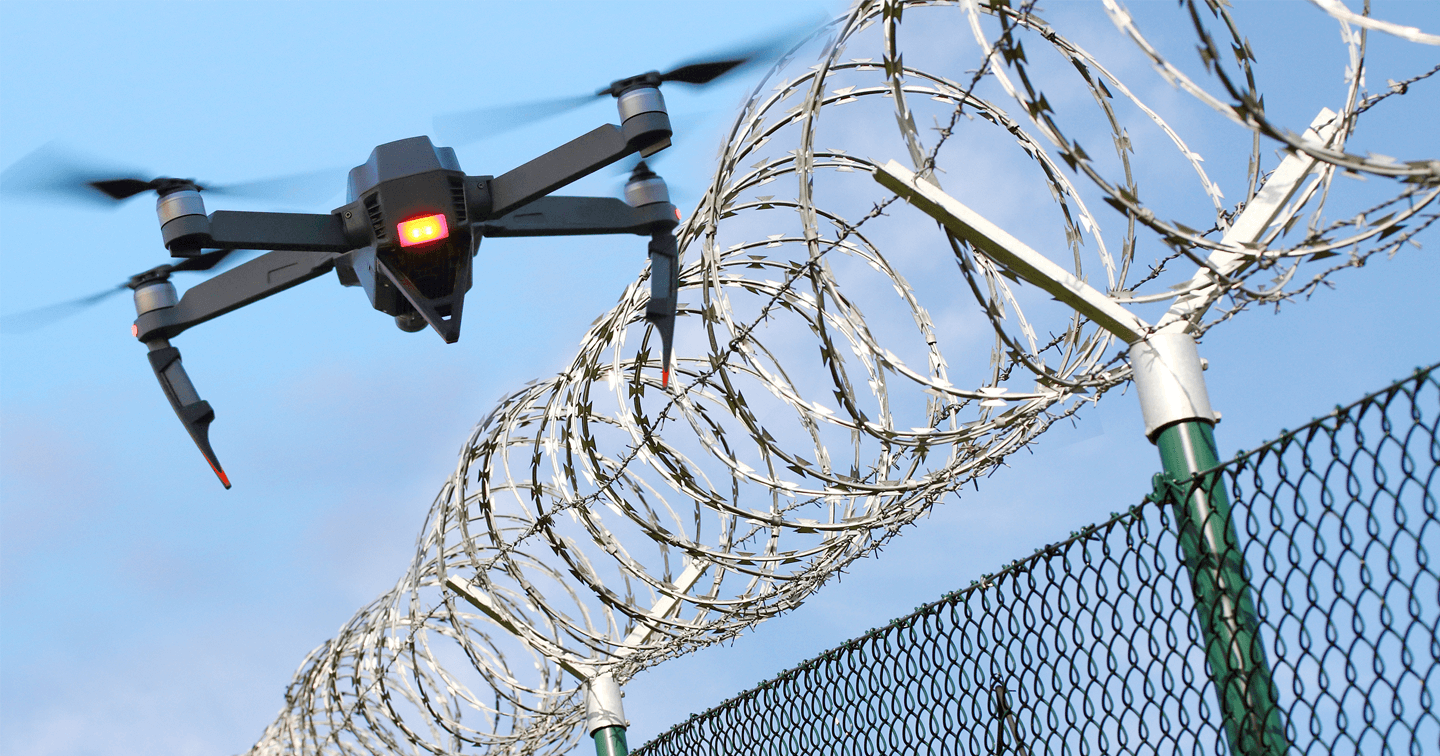UK Government to Install State-of-the-Art Anti-Drone Systems to Prevent Attacks
In The News | 01-02-2023 | By Robin Mitchell
In a recent but low-key announcement, the UK Government has taken a proactive step towards defending against the potential threat posed by drones. The government has declared its intention to install advanced anti-drone systems throughout the country to protect key sites from potential future attacks. These state-of-the-art systems are designed to detect and monitor unmanned aerial vehicles (UAVs), including remote-controlled (RC) drones, and identify any dangers, such as explosive devices.
Utilising cutting-edge electronic warfare technology, including radio and GPS, the systems are capable of tracking and monitoring the movement of these drones to ensure comprehensive protection against spy drones and other malicious RC drones. The move by the government reinforces its commitment to providing a secure and safe environment for citizens, highlighting the serious nature of the dangers posed by drones.
What challenges have drones presented, what does the plan intend to do, and does this signal a new age of warfare and terror?
What challenges do drones present?
Of all the technologies to have been developed over the past few years, only a few have been considered to be game-changing. One of these technologies has been AI, and in less than a decade, AI has transformed from being a novelty to a very serious practical solution to complex problems. Another major technology has been the introduction of 3D printers on scale. While 3D printing is still limited to tech-savvy individuals, the ability to design and print 3D structures at home has enabled rapid prototyping, and custom manufacturing, and, likely, 3D printers will eventually become a staple in every home.
But one technology that has been massively popular and controversial is drones. Before the first commercial miniature quadcopters were available, most RC aircraft consisted of planes with limited range, limited battery life, and unable to maintain a specific location. While cameras could be fitted to such platforms, the need for constant motion and skilled controls meant that using RC planes to spy and monitor was extremely difficult.
However, the introduction of the quadcopter drone changed this forever. Small wireless cameras could be installed onto a miniature drone capable of significant flight times while easily maintaining their position. This has led to many creative uses, such as tracking shots, remote monitoring, and even checking the safety of buildings and installations. But as great as these drone platforms are, they are not without their problems.
By far, the biggest concern with such drones is their ability to invade privacy. A small drone hovering several hundred meters in the air is nearly impossible to see and hear, but telescopic camera technologies can allow such a drone to watch individuals underneath with ease. This is especially problematic for those living in high-rise buildings who would otherwise assume they are not visible to the outside world.
But another challenge introduced by drones is their ability to inflict terror. Why this hasn’t become a problem in modern society is still astonishing, but the Russian-Ukraine war has demonstrated the very real danger that small, commercial drones pose. Their small size and fast speed make them hard to intercept, while their low cost makes them an extremely cost-effective solution for targeted attacks. If installed with a small quantity of high explosives, they are capable of bringing massive amounts of destruction with little to no warning.

UK Government to install anti-drone technologies to defend key sites
Recognising the increasing threat from drone attacks, the UK Government recently announced that it will be installing anti-drone technologies across the UK. These systems will be designed to protect critical infrastructure such as nuclear sites and public events such as the upcoming coronation of King Charles.
While only a few details have been made public on how the systems will work, it is expected that the anti-drone platforms will enable law enforcement to detect and track small airborne drones via signal detection. However, it is also possible that dedicated tracking technologies will be used to identify small drones that do not emit radio signals. This is especially important for defending against GPS-guided drone attacks that do not require an external operator.
Of course, detecting drones is only half of the problem, as once detected, malicious drones will need to be either disabled or destroyed. Remotely operated systems will often integrate safety features that force the drone to land upon a connection break, but those that are self-guided will not be deterred by directed radio interference. In these cases, it will be up to close weapon defence platforms to down drones. As firing live ammunition towards drones in public spaces will be out of the question, alternative methods will likely be used, including high-energy laser weapons and nets.
Does this signal a new era of warfare and terror?
Undoubtedly, as new technologies are developed, people will formulate ingenious methods for inflicting harm on others, and this will always be the case. In fact, it is remarkable that the western world has seen little to no drone-related attacks, especially considering how easy it is to manufacture dangerous drones. The Russo-Ukraine war has clearly demonstrated the advantages provided by drones, and it won’t be long before others around the world start to modify drones for their own nefarious purposes.
Of course, banning drones won’t solve this problem, as the technology needed to manufacture them is accessible to everyone, and forcing licenses and serial numbers won’t make any difference as those looking to commit crimes will likely put in measures to conceal their identity. Instead, it will be imperative to develop anti-drone technologies that provide strong defensive capabilities, even on a personal level. In the far future, homes may even come equipped with local drone protection systems that actively scan the skies for illicit devices and bring them down using scaled-back direct energy weapons.

